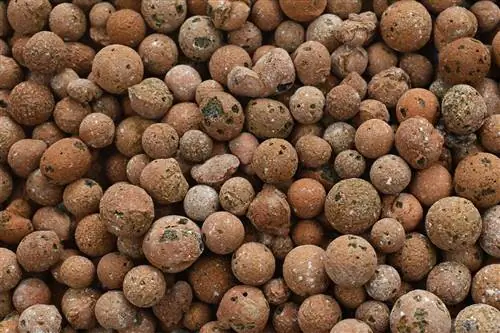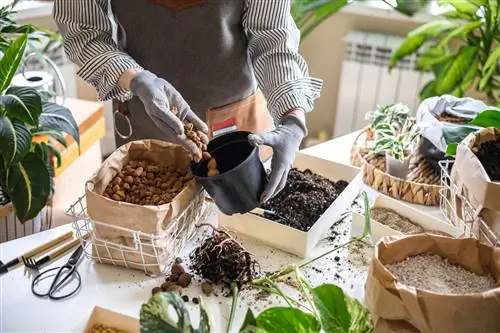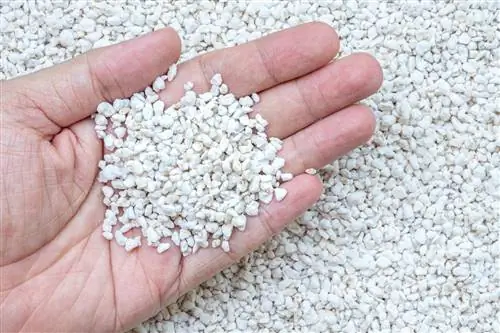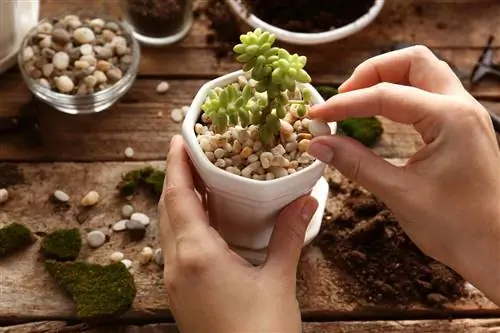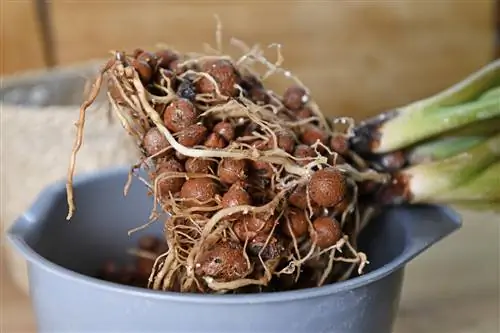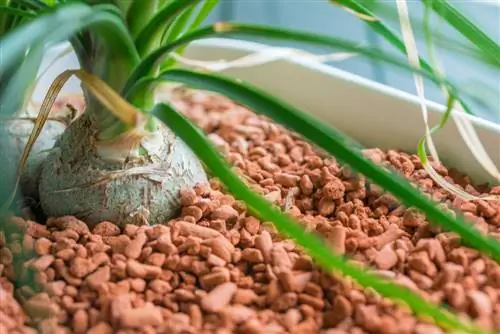- Author admin [email protected].
- Public 2023-12-16 16:46.
- Last modified 2025-01-23 11:19.
If a whitish coating suddenly appears on the clay granules, you naturally immediately think of mold. As a rule, however, these are not fungal spores. In this article you will find out where the white deposits on the clay balls really come from.
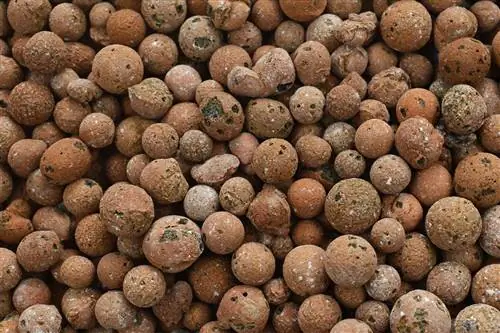
Is the white coating on clay granules mold?
White coating on clay granules can only be mold if the plant suffers from a fungal disease or root rot. However, it is usuallys alt and lime deposits that are mistaken for mold. Clay granules themselves cannot become moldy.
Why can't clay granules get moldy?
Clay granules cannot mold because they areinorganic. During the manufacturing process, the natural raw material is burned at very high temperaturesAll organic components burn, resulting in a purely mineral product. Clay granules are therefore resistant to mold.
Are the white deposits on clay granules dangerous?
The white deposits on clay granules, i.e. s alt and lime deposits, representno he alth risk to humans. Depending on how sensitive the plant reacts to an increased s alt or lime content, but she can definitely suffer from it.
How do I remove the white coating on clay granules?
If the white coating on the clay granules is only visually disturbing, the easiest way is to remove thetop layerand replace it. If you are afraid that the s alt or lime deposits could harm your plant, we recommend removing all the granules from the planter and cleaning them thoroughly before using them again.
How do I prevent s alt and lime deposits on clay granules?
To prevent s alt deposits on the clay granules, you should only usehigh-quality granules. Poorly produced clay balls often have too high a content of chloride, fluoride and sodium, which can result in s alt damage. Also make sure to use asuitable fertilizer.
Limescale deposits on the clay granules can be avoided by only usingsoft water for watering.
How does real mold appear on clay granules?
White deposits on clay granules or clay balls are rarely actually mold. However, this does not come from the inorganic drainage material. Rather, afungal disease or root rot of the plant is responsible for this.
Tip
Distinguish between s alt/limescale deposits and mold
S alt and lime deposits appear as rather dry, solid deposits that are difficult to remove mechanically. In contrast, you can recognize mold by its furry structure. In addition, there is a smell of mold on the granules and a general musty smell.

